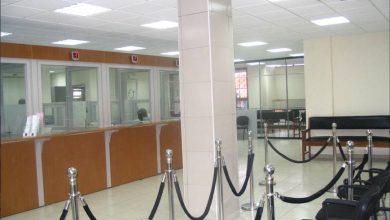Business Unpacked
Fresh hope for power all day?
News about the commissioning of the much-talked about phase two of the Kapichira Hydro-Electric Power project in Chikhwawa should be exciting and a relief to electricity users in the country who have been subjected to living without power half the time.
Call me a doubting Thomas, but personally, though, from previous experiences, I will keep my fingers crossed while assessing progress and the impact the $55 million project adding 64 megawatts (MW) to the national electricity grid will make.
I will keep questioning, where need be; commending when points have been scored and watching the developments until Malawians get a better service from the Electricity Supply Corporation of Malawi (Escom).
Following completion of the project, Kapichira Hydro-Electric Power Station is now the biggest on the Escom system with total installed capacity of 128MW, which is four megawatts more than the Nkula Power Station that has a total installed capacity of 124MW.
These are good developments worth commending.
When all is said and done, it is one thing to have the tools and yet a different ballgame altogether to deliver. The challenge now lies in Escom’s service delivery as power outages due to “high demand” will be expected to be a thing of the past as, we are told, the addition of 64MW to the national power grid will bring Escom’s total generation capacity to 351MW against a forecast peak demand of 350MW.
Power is one of the major drivers of investment into a country. Unreliable power supply, which Malawi’s industrial and domestic consumers have been exposed to, increases the cost of doing business as companies, for example, are forced to invest in non-core areas such as generation of stand-by power through generators and other means.
In fact, in 2009 or thereabouts, courtesy of the performance of Escom, Malawi earned itself an unenviable feat of having the worst reliability record in terms of power supply.
That time, the country had an equivalent of 63 days of power outages in a year, which was described as the worst reliability record of the 24 sub-Saharan Africa countries surveyed, according to a report by the Millennium Challenge Account-Malawi (MCA-M).
The addition of the extra 64MW will only make a difference if Malawians are provided with power all day, every day as it happened over the festive holidays. Gone should be the days when electricity consumers would call Escom’s customer call centre or faults section to “report a fault” on rare occasions when there is power all day, every day.
Due to unreliable power supply, the country has lost out on the potential to grow the economy. For example, investors in the mining sector need more energy to operate. Paladin Africa Limited’s Kayelekera Uranium Mine in Karonga requires a continuous 10MW for uranium mining and processing which Escom was not providing. Globe Metals, currently exploring at Kanyika in Mzimba would need 20MW for mineral sands mining and processing.
I have said it before that Escom is not solely to blame for the problems of power outages or unreliable supply. Half of the problems facing Escom and, possibly several other State-owned enterprises and utility firms, are political with 20 percent being linked to management shortfalls. The remainder is made up of a cocktail of several factors, including general system inefficiencies.
Political influence in Escom and other parastatals, including the water boards, is visible through the appointment by the President of the board of directors and inclusion of politicians from parties in government. The mere involvement of the Head of State or officers delegated by him/her has a bearing on an institution’s governance and independence in making decisions.
With the addition of Kapichira Phase II and then, in the “near future”, the Millennium Challenge Corporation’s (MCC) energy grant whose objectives include improving availability of reliable and quality power supply and increasing access to electricity to the un-served customers in urban and rural areas (currently, about 10 households out of every 100 in Malawi’s estimated 14 million population have access to electricity), surely, Malawians should have something to smile home about.
Fifty years after independence, Malawians seem to see some light at the end of the tunnel to have power all day, every day.



